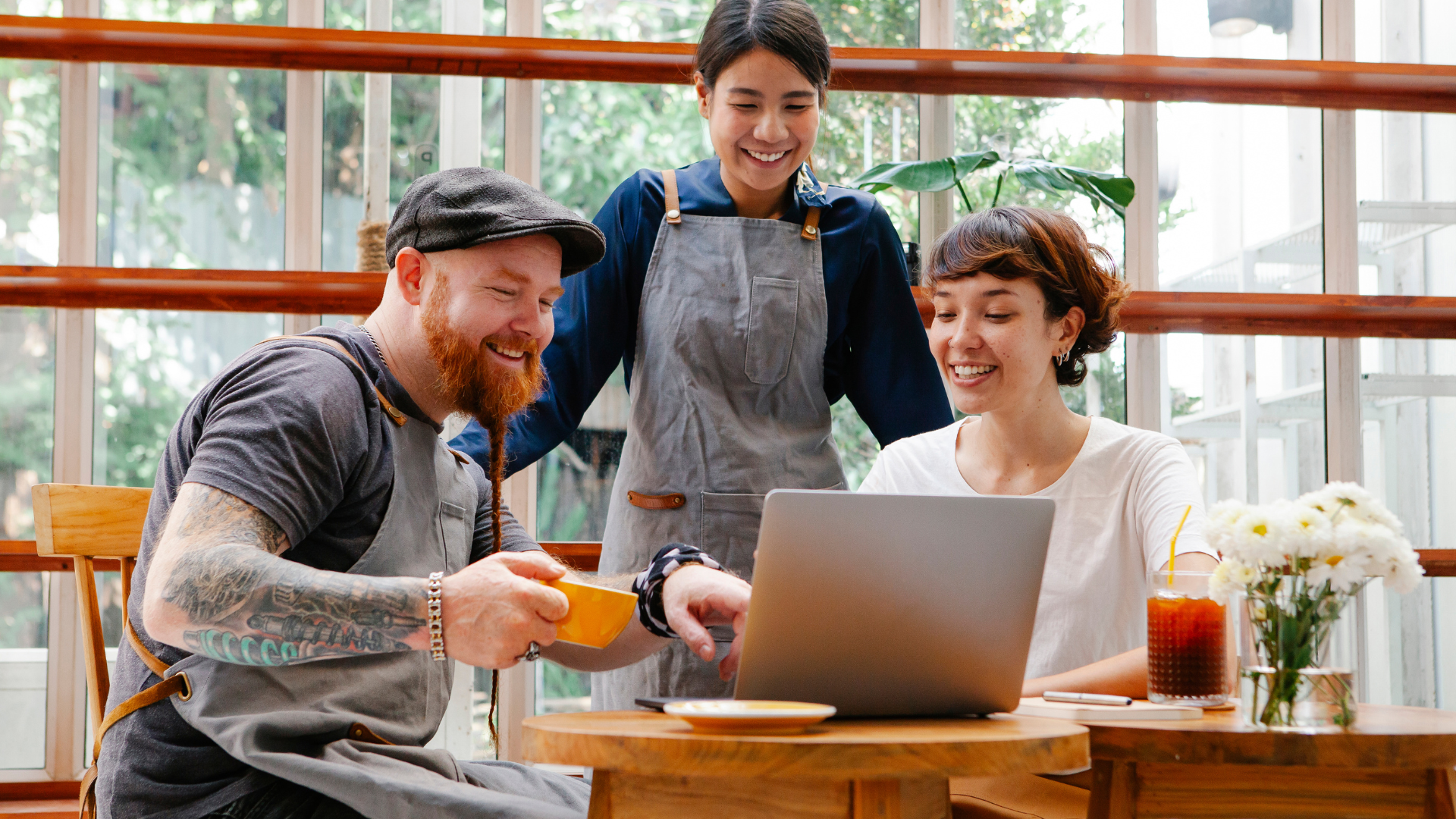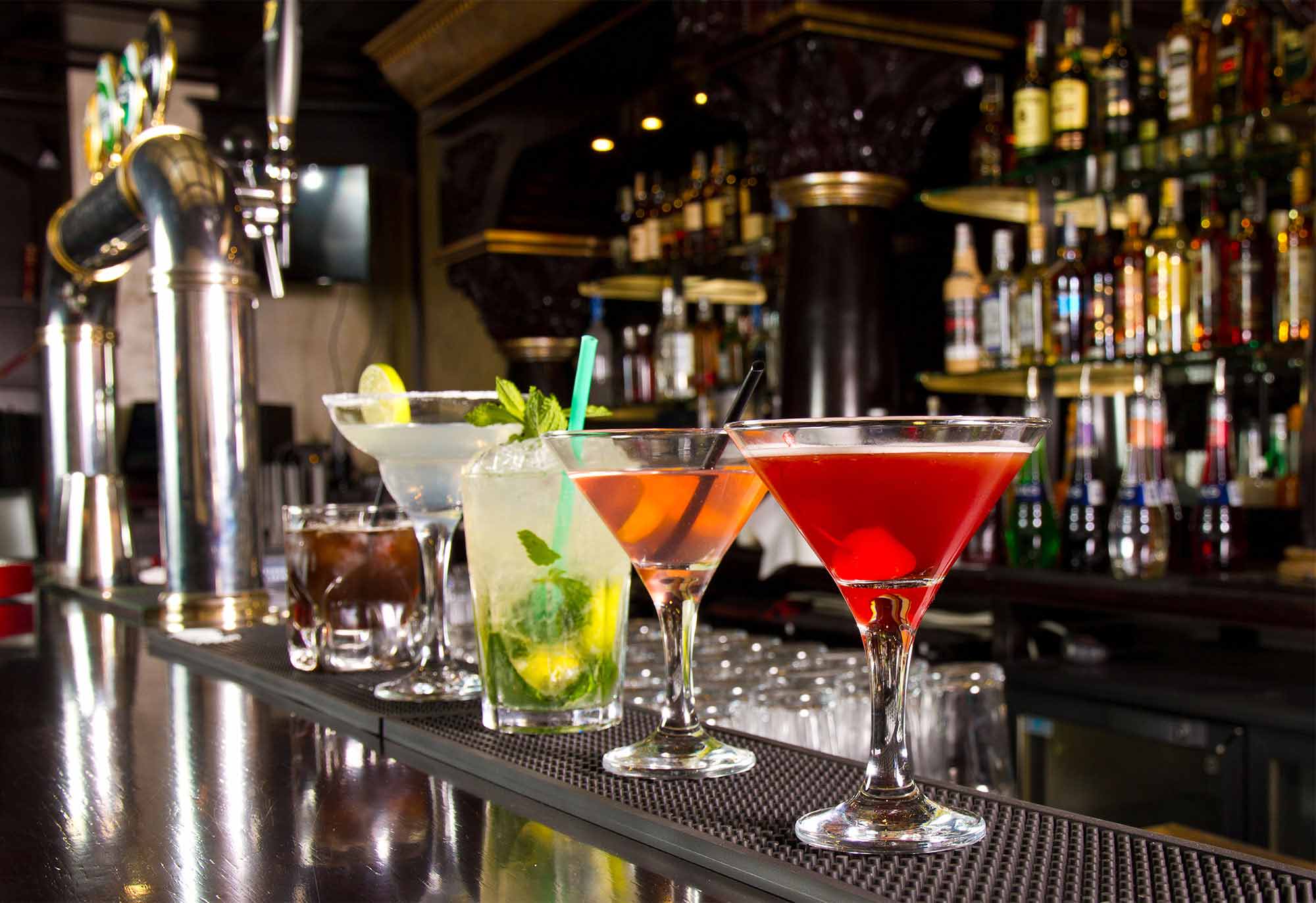A restaurant menu can be the main deciding factor for a customer to spend their money with you. Each dish may be scrutinised before it even touches the table. The menu creation process can be daunting for new restaurant owners but it can also be an opportunity to bring all of your creative ideas into a tangible result for your business.
A quality menu design can enhance your guests' overall dining experience, and descriptive language can add anticipation for a mouth-watering taste. It combines your brand, personality and ambience into one beautiful menu that can increase profit, positive reviews and returning customers.
This process allows a restaurant owner to be clever with their design, take advantage of customer reading patterns, evoke emotional buying, and highlight high-margin items to drive more profit. It is a good time to take control of the buying journey and influence your customers to give yourself the best possible chance of a successful business.
So, how do you apply all of these opportunities into one slick menu design? ResDiary has compiled an extensive list of 14 insights that make a quality menu design so you can get excited about the process. In this article, we will cover:
-
The key considerations for designing a menu including tips
-
Software you can utilise
-
Digital menu options you should incorporate
-
How to print your menu including sizing, paper and covers
Our helpful tips will help a new restaurant owner or those with an existing menu looking to rebrand or increase their profitability.
14 Key Considerations with Menu Design
Whether you own high end restaurants, cafes, a seafood restaurant, Mexican restaurant or a food truck; these considerations will help you create a professional menu that will show your restaurant's personality. We recommend applying all of these considerations to your restaurant's brand and ambience; write down your ideas for each one and by the end you will have a clear image of how to design your menu.
1. Have a strong first impression
Most customers will look at a menu online before booking a table so it needs to make a strong first impression. Not only that, most will only scan the menu rather than fully reading it from front to back so a restaurant has even less time to impress. As a restaurant owner, you should think about your brand image and what you want to convey from your menu through visual techniques:
- Your style - Is your restaurant themed? Think about the ambience of the dining space and reflect this in your menu design
- Your audience - Think about who you want to attract and dine here. Is it a date night vibe or a family space?
- Your dining experience - Do you offer set tasting menus or individual dishes? How can your menu portray the service you offer
2. Optimise for reading patterns
Professional menu engineers have researched and analysed the reading patterns of customers and their insights could make your menu's layout successful. The research suggests that customers tend to read menus like they read books but their eyes are drawn to the item in the upper right hand corner. This is referred to as the "sweet spot" and menu engineering experts advise you to put your most expensive menu item here.
3. Hide currency symbols
Another menu engineering tip! Their job involves analysing customer patterns and testing different menu designs for success to see if it triggers a different psychological behaviour. Many menu engineers believe that dollar signs can remind customers of the pain involved in budgeting and spending money and could lead them to only order the cheapest item.
Removing the dollar signs and only leaving the number softens the price and allows a customer to buy without the stressful thought of budgets.
4. Be tactful with your prices
Some menu design tactics include removing the price of items all together. This is so that the customer is focused on the dining experience and orders a dish purely based on its description and visual aid rather than from fear of spending money.
If you would prefer to leave the price for the customer, you can use one of two "decoys" in your restaurant menu template:
- Bury the price - Make the description the main focus of the menu items and simply put the price in small font at the end of your sentence. Rather than focusing your customers' eyes to the price in its own column or with the large font label, you allow them to read before you give them the price.
- Mix your prices - Rather than grouping all the expensive items together, space them out throughout your menu. If a customer reads "Pan seared salmon 34" then "Beef Wellington 69", the pan seared salmon price will appear more appealing and affordable.
5. Divide into sections
A thoughtfully designed menu will divide it into logical sections to make it easier for customers to read and make a selection. Menu sections could include the standard entree, main courses and side dishes. You could also split your menu into food groups such as meat, seafood, burgers, vegetarian, pasta, pizza etc.
6. Highlight high-margin items
A restaurant's success can be impacted by having a high margin on certain dishes, meaning they are low cost to make but priced to generate a higher profit. In order to sell more of the items with the highest profit margins. You can highlight these in your restaurant menu design with the use of colours, bolding, a border or illustrations.
If you are redesigning your menu and need to increase the margin, check out our guide on how to reduce food costs.
7. Place dietary symbols
A great restaurant menu design will be as helpful as possible for your customers. In order to attract as many diners as possible, you should highlight your unique selling points like dietary accommodations. Your symbols could include:
- Gluten free
- Vegan
- Vegetarian
- Religious considerations such as halal or kosher
There is a full list of dietary requirements for restaurants to consider so make sure you highlight the ones you offer.
8. Use colour to influence customers
Colours can have psychological effects on people so your restaurant menu's colour scheme should reflect the mood and theme of your dining experience. Here are some suggestions for different restaurant types:
- Seafood Restaurant menu - Use blue to highlight fish menu items as people associate blue with crashing waves, marine life and coastal vibes.
- BBQ Restaurant - Warmer reds, maroons and oranges invoke images of fire, warmth and can trigger the appetite.
- Organic or farm-to-table - Green shades tend to trigger people to think of fresh food and luscious green farms so this colour on your menu could help you enhance your restaurant's theme
- Bakery or Cafe Menu - Pink is often used on cake menus as it is associated with tenderness and innocence
9. Design creative typography
The font you use in your menu design should match your restaurant's personality and logo. You should be creative and use more than one typeface to help guide your customers through your menu items. Use imaginative bold fonts for headings and think about the font size, legibility and length of the menu description.
10. Use descriptive menu labels
This is the fun part of your menu design and where you can really sell your dining experience. Rather than just listing the ingredients in each dish, think about writing descriptive menu labels that will trigger your guests appetite and make their taste buds tingle. Use it as an opportunity to describe the craftsmanship put into each item and how much your chefs care about every flavour.
Take a look at some of our examples of edit text:
Simple description: Buttermilk Chicken
Creative description: Tenderised, hand-dipped and deep-fried buttermilk chicken breast
This description lets the diner know the work involved in creating this dish and that it is house-made with care.
Simple description: Steak and Fries
Creative description: Char-grilled 28-day aged succulent sirloin steak served with tender triple-fried goose fat potatoes
The use of the words 'succulent' and 'tender' makes the food sound appealing and 'char-grilled', '28-day aged' and 'triple-fried' describe the lengthy preparation involved for this one dish, which justifies the price tag.
The following words may be used to describe your preparation:
- Slow-roasted
- Pan-seared
- Fermented
- Whipped
- Hand-cut
- Marinated
Always describe the texture, flavour or colour of your dishes, some examples include:
- Crispy
- Tender
- Succulent
- Smoky
- Velvety
- Sticky
- Golden
It’s important to note that you should not go overboard with your descriptive language. Pick out a few words that are accurate to your dish that will excite your customer, rather than overwhelming them.
11. Make your menu items personal
Your menu design is an opportunity to get excited about your unique selling points and make your items personal to you. A well designed menu will invoke feelings of nostalgia, sceneries or home by giving dishes more personal names, such as:
- Nonna's Favourite Marinara Sauce
- Chef Olivia's Homemade Soup
- Southern Highlands dry-aged beef
Personalising your descriptions help to humanise your menu items and distinguish them from other commodities.
12. Limit your photos
Your type of restaurant will influence how many photos you should use. As a rule of thumb, using a lot of photos or stock images on your menu design will make your menu appear low-end, casual and family style. Franchise restaurant chains will use food photography in their menu templates and usually limit it to one per page, section or category.
If you decide to use photos in your restaurant's menu, they should be high quality images to represent high quality ingredients, preparation and dining experience. High end restaurants should invoke the customers imagination as some food photography may not appeal to everyone and can cheapen the look of your menu.
13. Use illustration
A clever way to make your menu more visually appealing is to use illustration and graphic design to help sell your restaurant's brand and menu items. Rather than having a photograph of a burger, you could have an illustrated image of the hand-crafted burger. This allows your product to seem more elusive, high-quality and sought-after; the customer will have to purchase it to see it.
14. Have a separate beverage menu and dessert menu
When it comes to creating a restaurant menu, you should aim to show the care and thought put into every item. By designing a separate menu for desserts and drinks, it establishes these elements as high quality and worthy of a customers money, rather than getting lost on multiple pages of a menu.
For a bar menu, think about describing the ingredients, the preparation for the cocktails and personalise your names. List where your drinks are from to humanise your products and promote a unique selling point. Check out our top tips on putting together a drinks menu.
A dessert menu should highlight the luxury finish to your main menu and capture a customers attention. Use descriptive language, highlight the preparation and care involved and consider using illustration to captivate your guests imagination and gain that upsell.
Software to design your menu
Restaurant owners, both new and established, have a wide range of duties and responsibilities to run a successful business. You should always look to make tasks easier with software. There are a lot of great free and beginner websites with menu templates, colour schemes and design options that anyone can easily pick up and use.
Benefits of designing your own menu
There are many benefits of designing your own menu:
- Flexibility to update menu items instantly
- Access to your design straight away
- Control over your restaurant's identity
- Promote offers or high margin dishes
- Helps you organise your food inventory and spend
We have narrowed down our favourite design software for beginners:
1. Canva
Canva is the number 1 beginner design software with hundreds of menu templates to add your branding to or use as ideation starting points. You can sign up for free or subscribe to their premium service for access to a huge range of illustrations, graphics, images and fonts. A great benefit is that you can order prints from Canva too, making it an all in one service.
2. Adobe express
As a beginner software, Adobe Express is perfect to design your menu. They have a free menu design option with a range of templates, fonts, images, graphics and branding options.
3. iMenu Pro
An easy-to-use online menu creator with both free and premium options. This is a comprehensive but easy option for restaurant owners as their design is purely centred around menu templates created by expert designers.
Digital menus
Many customers will read a restaurant menu online ahead of booking a table or dining so it pays to ensure your new menu design is uploaded. Not only that, there is a lot of new technology for restaurants and many advantages to integrating digital menus for your business.
Benefits of a digital menu
The advantages of a digital menu may mean you want to solely design an online menu, or use it as well as a paper option. These advantages include:
- Real-time updates of menu item availability
- Flexibility to change your menu
- Accessible to more customers
- Options to integrate into pay software
- Opportunity to link to food inventory
- Less printing costs
- Environmentally friendly
Publish your menu online
Publishing your PDF menu design on your website is a great way to attract more diners and entice them to book a table. You can reach more customers by also publishing on:
- Google my business
- Yelp
- TripAdvisor
A few tips for publishing online:
- Ensure the file size is no more than 200kb so it does not slow down your loading speed
- Make the file accessible for mobile screens such as ensuring the font size is legible
QR Codes
Our restaurant industry statistics found that QR Codes became a necessity during the COVID pandemic but have been adopted as a whole by the restaurant industry and are here to stay due to the many benefits they offer:
- Save on printing costs
- Can have a standalone PDF menu
- Can allow customers to order and pay on their phone
- Eliminate no-pay walkouts
- Real-time updates to the menu
- Ability to design for a restaurant's brand
- Free up staff time
- Speed up table-turnover
Our design rules for restaurant menus still apply when integrating QR codes, particularly highlighting offers and high profit margin dishes.
TV Screens
Particularly popular in fast-food establishments and cafes, TV screens on the walls allow you to update your menu items easily and frequently. This option also allows you to utilise animation, video and other marketing techniques to entice your customers.
iPads
When this technology was first released, it was only utilised by some high-end concept restaurants but it is now accessible to many. Similar to QR codes, iPads allow customers to see only menu items that are in stock and order and pay at their table.
ResDiary
ResDiary is a restaurant reservation software that can integrate your menu, pre-ordering and delivery orders. Incorporating full reservation software will help you with table management, attract more diners, collect payments, strengthen your marketing and increase loyalty with customers. Find out how our ResDiary software can elevate your menu and enhance your restaurant management.
How to print your menu
The options for printing your menu will depend on the size of your design and the amount of menu items you have to display.
Menu Sizes
Some common restaurant menu sizes include:
- A3 Large Menu - usually reserved for family-style or low-end restaurants and laminated
- 8.5" x 11" Letter - This size is the most popular for many restaurants and is a simple one sheet that can also be displayed in menu covers
- 4.25" x 11" Half Page - A thin menu card that is favoured by modern restaurants with less menu items to display
- 8.5" x 11" Bi-Fold - A booklet style that is widely used for bar restaurants with lots of categories to display
Paper Quality
The type of paper you use to print will impact your customers' impression of your restaurant. A quality menu print will market your brand as higher quality and portray the care you put into your product.
A restaurant menu is also handled by many staff and customers every day so it should be high quality to last. Consider using:
- Cardstock -A thick durable paper used by many restaurants.
- Waterproof menu - Favoured by family-style, fast-food and bar restaurants.
- Linen finish paper - A luxury paper usually reserved for fine dining establishments.
Amounts to print
You need to establish your restaurant capacity in order to know the amount of menus to print. Ideally, you should print enough menus to have 1 per customer so they can enjoy browsing. Follow our helpful table to calculate the amount of menus you need to print:
|
Menu Type |
Number Per Person / Table |
Number Per Restaurant |
|
Breakfast Menu |
1 Per Person |
75% of Your Seating Capacity |
|
Lunch Menu |
1 Per Person |
75% of Your Seating Capacity |
|
Dinner Menu |
1 Per Person |
75% of Your Seating Capacity |
|
Dessert Menu |
1-2 Per Table |
50% of Seating Capacity |
|
Wine List/Drinks Menu |
1 Per Table |
1-10 Menus |
Menu Covers
Bespoke branded menu covers allow you to make your menu design more luxurious but keep your menu template pages simple and flexible. A leather-bound or linen cover stands out and gives your customers an impression of opulence and a high dining experience. The printed pages inside are interchangeable and can be updated more frequently.
Summary on designing a Restaurant menu
A restaurant menu is often a customer's first impression of your brand, food quality and dining experience so it pays to ensure it is well-designed. Our 14 helpful tips will not only help you market your restaurant to diners, but they can also help your restaurant maximise its profitability too. Integrating printed and digital menus will allow you to attract more customers, be flexible with menu changes and incorporate software to help you manage more effectively.
Let us help maximise your menu's success with technology designed to help you deliver compelling customer experiences. Book a demo today!
Disclaimer: This guide is general in nature and does not take into account your individual circumstances. Before acting on any information, consider whether this is right for your business.



